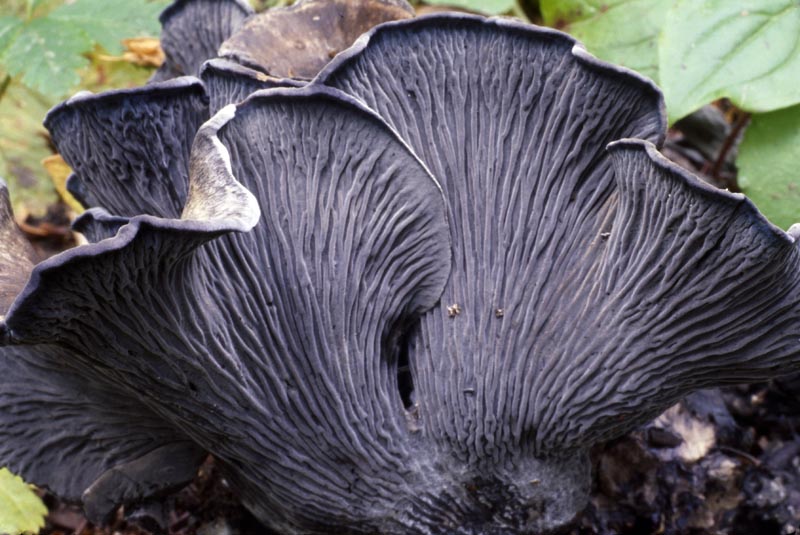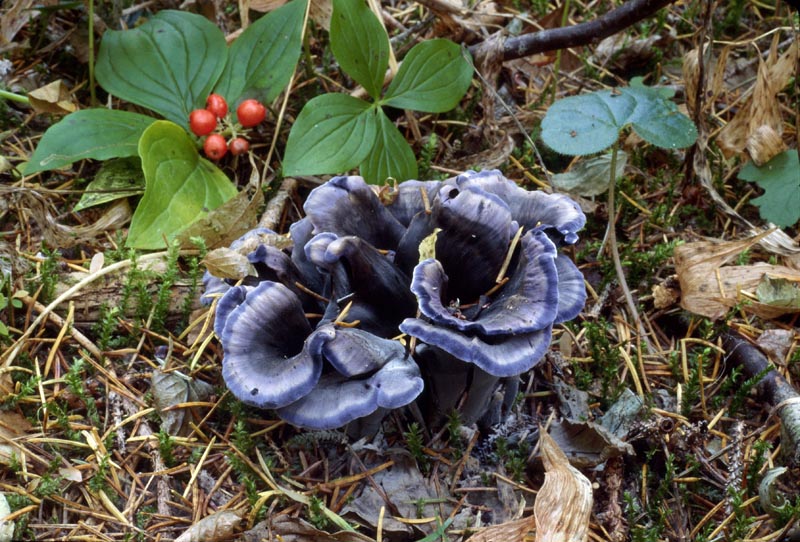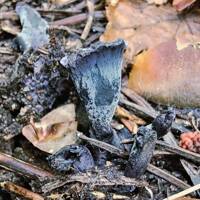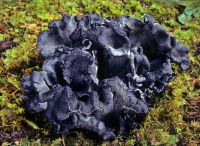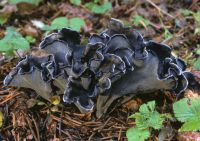Page author: Wynn Tranfield
Polyozellus multiplex
black chanterelle, blue chanterelle, blue clustered chanterelle, clustered blue chanterelle
Distribution: Relatively uncommon Western North America, Japan and Korea
Habitat: Old-growth conifer forests
Conservation Status: Not of concern
Edibility: Edible, but rare, so use restraint
Description:
Identification:
The purplish to blackish color, veined fertile surface, and tendency to grow in tight-packed clusters make Polyozellus multiplex easy to identify. If confirmation is necessary, the warty white spores and blackish green reaction of the flesh when potassium hydroxide is applied will cinch the identification.
Edibility:
Edible, but rare, so use restraint
Comments:
Common Name: Blue Chanterelle, Black Chanterelle
Accepted Name:
Polyozellus multiplex (Underw.) Murrill
Synonyms & Misapplications:
(none provided)
Additional Resources:
PNW Herbaria: Specimen records of Polyozellus multiplex in the Consortium of Pacific Northwest Herbaria database
CalPhotos: Polyozellus multiplex photos
5 photographs:
Group by

